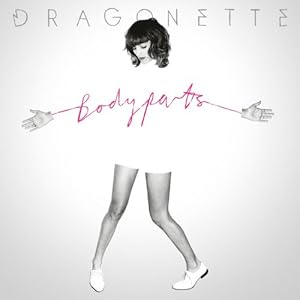What the pop papers say: Staggers launches attack on the NME front
I've been banging on about how the NME has got locked into a dependency on the sort of heritage act that it was supposed to have blown away back in 1977 for a while now. I doubt it bothers them much.
They might want to be a bit more concerned about a similar complaint from the New Statesman. Because if anyone is going to write from a sympathetic position, understanding the difficulties in shepherding a long-in-the-tooth magazine through hostile times, it's the New Statesman.
Writing on the paper's Cultural Capital blog, Rob Hastings asks why NME readers find themselves cast as Cole Sears, so often seeing dead people:
Personally, I can’t complain. After drunkenly bopping away to Franz Ferdinand and The Libertines during most of my drunken uni nights out – back when I would buy the NME week-in, week-out and blu-tacked the front covers to my bedroom door – the subsequent decline in the bubble of excitement around indie rock in favour of electro and hip-hop has left me cold, making me explore older artists’ back catalogues more often than discovering new bands. Save for Arcade Fire or the Yeah Yeah Yeahs, the surest way for the NME to secure me as a reader these days would admittedly involve sticking Bob Dylan or Neil Young on the front.In the comments section, Alex Lyall thinks he has a gotcha:
But perhaps that sums up the sadness of the situation. The magazine’s frequent decision to promote features on “heritage” acts from the past rather than interviews with exciting new groups such as Mercury Prize contenders Alt-J or Django Django must be commercially driven – either because the current crop of up-and-coming acts just aren’t deemed good enough, or because people listening to the hottest acts don’t care what the NME has to say anymore, leaving the magazine groping for older readers to sustain itself.
Hilarious because NME's new cover has Palma Violets on it. A band much younger than Cobain, Curtis or LennonThis does miss the point a bit; Hastings doesn't say that they only do heritage covers.
But boy, they do do a lot of them. I think you have to go back to April/May to find a two week period where the cover was given over two weeks running to artists who hadn't already made enough to buy an island (Tyler The Creator followed by Friendly Fires) and probably back to 2008's Fucked Up-Glasvegas-Crystal Castles page ones for a three week run of new music covers.
And next week is a tenth anniversary of Up The Bracket special, so it's not as if the Palma Violets cover really is the start of a new era of looking forward.
What makes it worse, though, is that the Palma Violets cover is part of a New Music special. A special! It's like the New Statesman doing a left-leaning political narrative special.
And the coverlines don't exactly suggest the paper has much faith in new music interesting its readers:
NEW MUSIC SPECIAL 25 BRILLANT BANDS YOU HAVE TO HEARDon't worry, people - the new noises have been filtered through the same acts we're always going on about.
PICKED BY LILY ALLEN, THE CRIBS, MANICS, BATS FOR LASHES AND TONS MORE
Are you still nervous?
STILL GOT ITWhat? Still feel that despite offering 'new' music from a bunch of acts with 113 years of experience between them, we might be getting too edgy?
How DAMON, WELLER, BJORK & THOM embraced the future
Don't panic, dear reader:
OASIS: THE REUNIONAn interview with Bonehead about Oasis. Could anything be less relevant to a new music special?
Bonehead spills the beans
To be fair, the Damon/Weller/Bjork/Thom piece is well meant, but misfires. Barry Nicolson starts out with a thesis that older musicians don't have to get stuck into just playing the hits. That's true, but an article that gathers up artists who share little beyond being a bit older might not want to use a pull quote which asserts:
Age is no more relevant than gender or sexualityAh, and if we could only say so confidently that gender isn't relevant.
But with Rolling Stone just about to publish a "special" about Women Who Rock, I'm not sure we can.














